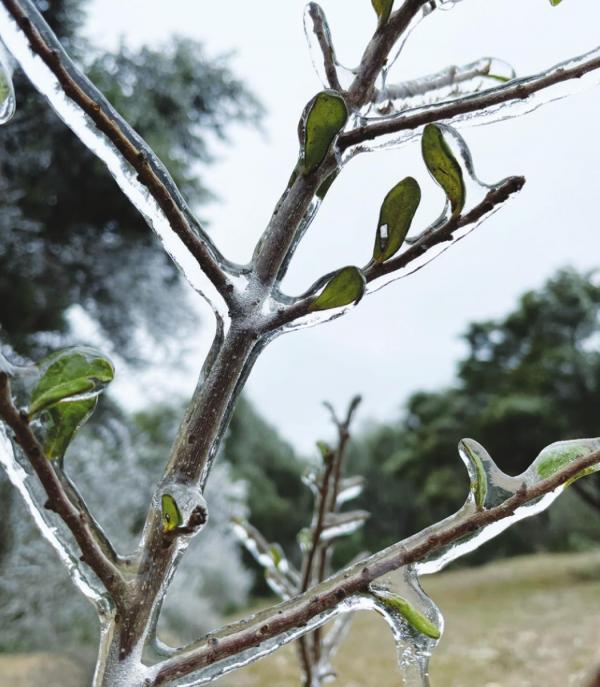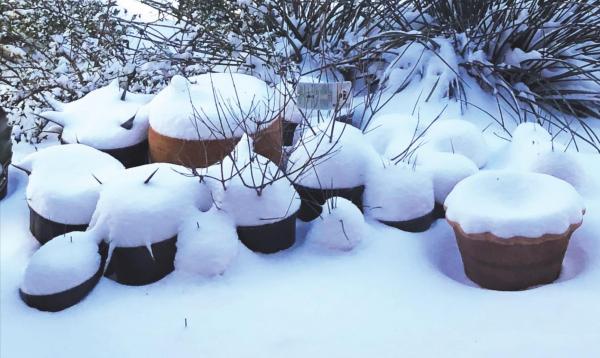What to do with your frozen plants
Gardeners and farmers were hit by a state-wide freeze that shattered and set new records for cold, temperature and longevity. Power outages affected heating sources for both people and plants, even covered or greenhouse plants.
Estimates of the damage cannot be calculated as the devastation is vast. According to Texas Agricultural Commissioner Sid Miller in a marketplace.com article, “(j)ust our citrus industry, their loss of just the fruit, not including damage to trees, is over $300 million and it will put a lot of our citrus growers out of business.”
Closer to home, the Austin American Statesman February article by Addie Broyles states, “Texas farmers face devastating crop loss.” The storm hit everyone hard including local gardeners, even with greenhouses. It was just that cold.
Looking at the damage to plants, even indoor ones, can make it hard to not just want to go on a hacking spree, tearing off or throwing out plants that can look like they came out of those locally-filmed zombie TV shows.
After it warmed up to 70, local experts’ advice was certainly needed and the experts agreed. Patience is a virtue, and in this case, it might be the best to deal with those evil-looking dead plants. It happens all the time in the woods around here, just tune into AMC.
“I am personally taking the wait and see attitude with plants outside. Each day seems to make evident more dead vegetation,” Master Naturalist/Wimberley View contributor, Jackie Mattice said.
“I am in hopes that the escarpment oaks will lose their leaves as they normally do this time of year and the new ones will appear within a couple of weeks thereafter,” she continued.
“Agaves and Bush Primrose Jasmine have NEVER looked like they do now. So this whole event is like a science experiment where we will be making lots of observations. ”
More advice came from Tim Thompson, former Horticulturist at King Feed and long time valley expert. “Don’t give up. Of course, dead plants, obvious ones, leaves are black and flat on the ground.” But whether there’s still life in it is questionable. “They can still have live tissue at the base of the plant, below the surface. They can come back from that… Tropical plants, covered or not have serious damage. It’s definite they don’t like freezes… Vines can freeze down to the ground and start over… clean (them) up and get it out of the way. Top dress with compost.”
Fruit trees should weather the storm as most require a certain number of hours of cold weather hours in order to set fruit. Most Texas native plants were able to handle the cold weather.
“Keep an eye on your plants. Once a week get on your hands and knees and look down under on the plant… wait and see,” Thompson said.



